Navigating the Google Maps Route Planner
Starting with the Google Maps route planner is straightforward and user-friendly. On the mobile app, tap the blue “Directions” button, enter your starting point and destination, and click the “+” icon to add additional stops. The web interface offers similar functionality; just click the blue “Directions” button in the top left corner to begin entering your locations.
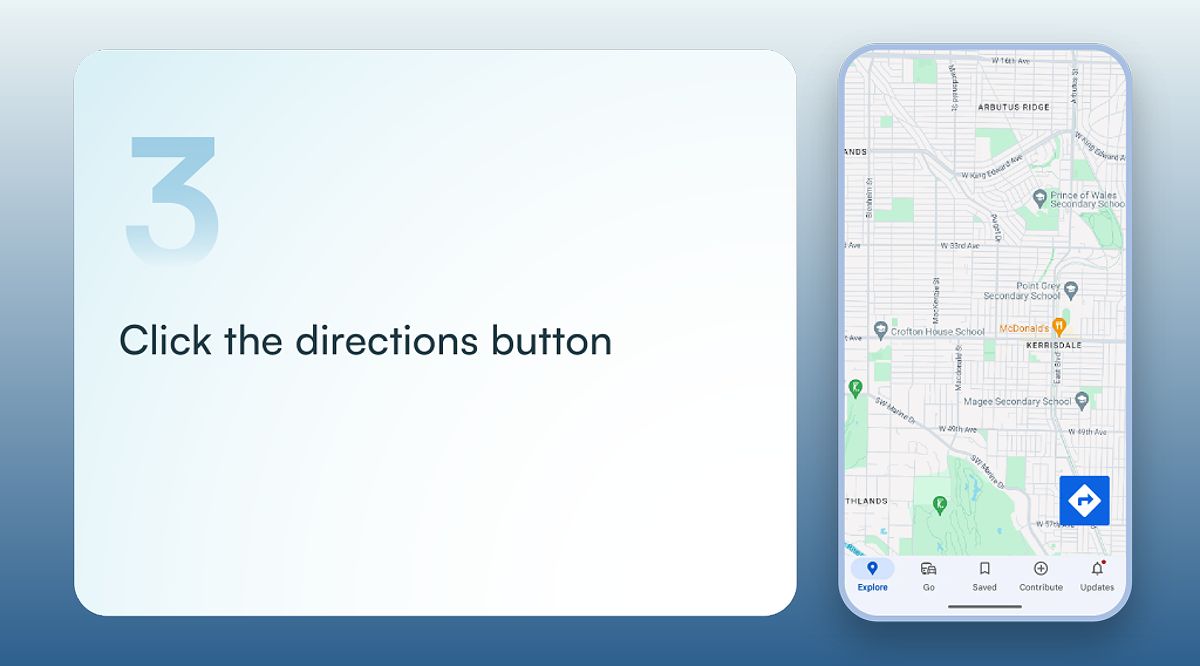
However, keep in mind that Google Maps limits the number of stops to 10. If your business requires more than this, it’s time to consider exploring alternative solutions tailored for complex routing needs.
Customizing Your Route
When setting up your route, it’s crucial to select the appropriate transportation mode—be it driving, walking, biking, or public transit. This choice ensures that the directions and estimated travel times are tailored to your specific needs. For delivery-focused small businesses, the driving mode is typically the go-to option.
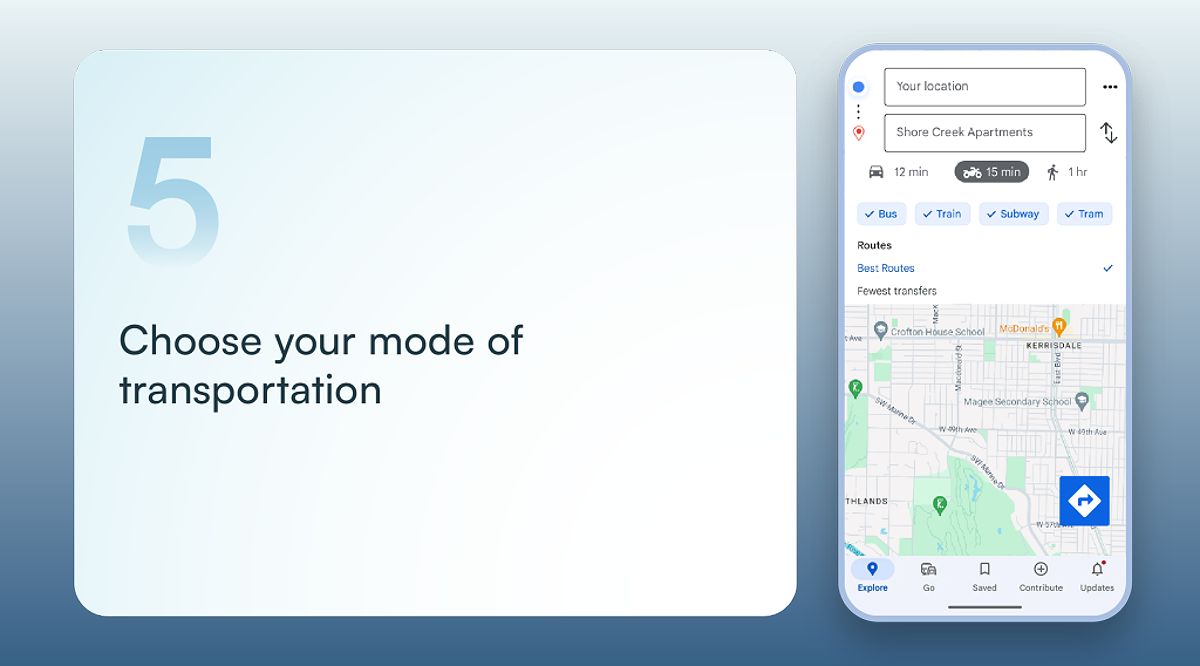
One key limitation of the Google Maps route planner is its lack of automatic route optimization. While it provides the fastest route from point A to point B, it doesn’t necessarily arrange your multiple stops in the most efficient order. You’ll need to manually rearrange the stops to discover the quickest path. This may require a bit of extra effort but is essential for maximizing efficiency.
Rearranging Stops for Optimal Efficiency
To rearrange stops, simply locate the three dots next to each stop and drag and drop them to reorder your route. This feature allows you to compare estimated travel times for different arrangements, helping you pinpoint the quickest path that covers all your destinations. By employing this method, you can significantly reduce overall driving time and enhance your service delivery.
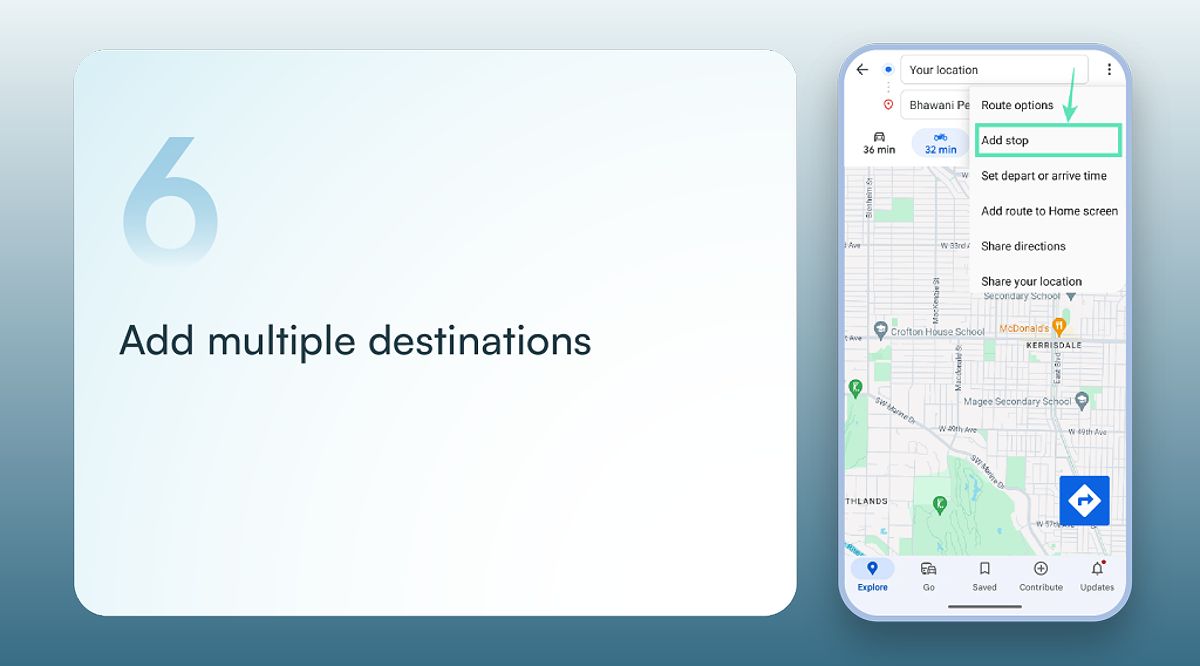
Leveraging Google Maps Features
Beyond basic routing, the Google Maps route planner offers features that can be beneficial for small businesses. Take advantage of options to avoid tolls, highways, or ferries—factors that may impact your operations. Additionally, stay informed with real-time traffic updates, allowing you to adjust your route as needed.
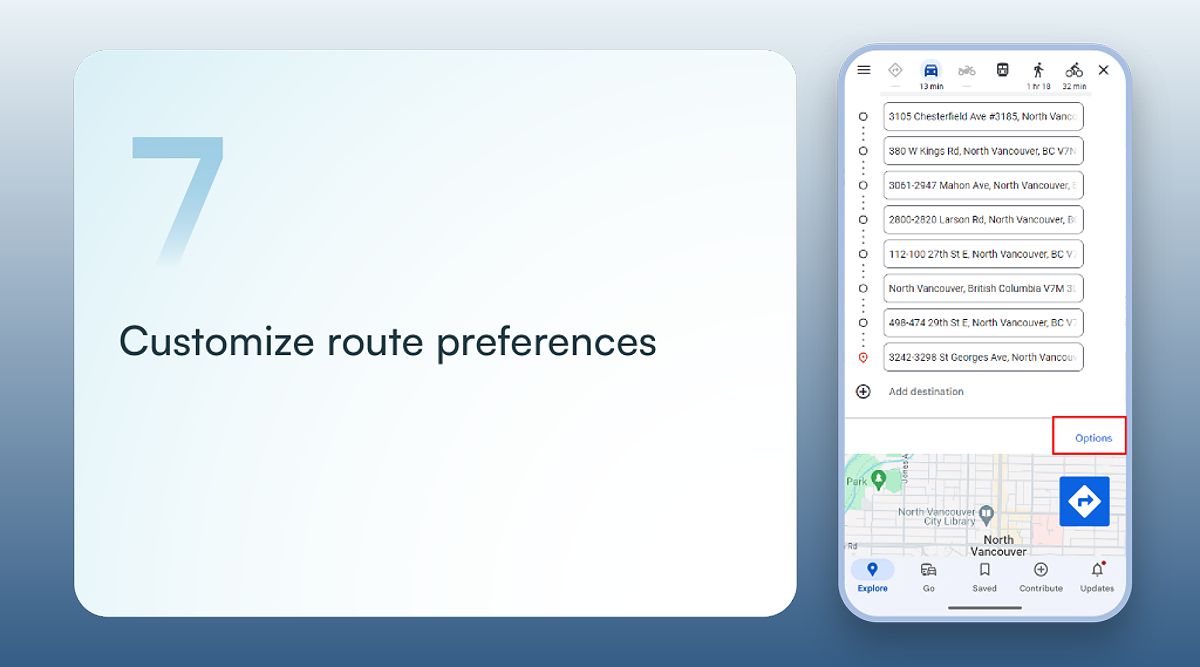
For instance, if you receive a notification about traffic congestion on your usual route, you can quickly modify your path to circumvent delays. This adaptability can save you time and enhance your service reliability, which is critical for customer satisfaction.
Exploring Advanced Route Optimization Software
While the Google Maps route planner serves as a valuable tool, small businesses with intricate routing needs may find its capabilities limited. This is where specialized route optimization software comes into play, taking your operational efficiency to new heights.
Key Features to Look For
When considering alternative solutions, seek route optimization software that boasts features such as:
- Unlimited Stops: Unlike Google Maps, which limits you to 10 stops, advanced software can handle hundreds of stops, making it ideal for delivery services or extensive sales teams.
- Advanced Algorithms: These tools utilize sophisticated algorithms, often leveraging techniques like the Traveling Salesperson Problem (TSP), to calculate the most efficient routes based on various factors, including traffic patterns, road conditions, and stop priorities. Some advanced systems also incorporate real-time traffic data, dynamically adjusting routes based on current conditions. For example, a system might reroute a delivery vehicle around a sudden traffic jam, preventing delays.
- Time Window Scheduling: This feature allows businesses to set specific time frames for deliveries, ensuring that they meet customer expectations and improve satisfaction.
- Delivery/Service Status Tracking: Real-time tracking enables businesses to monitor their routes and make adjustments on the fly, further enhancing operational efficiency.
- Integration with CRM Systems: Seamless integration with customer relationship management software enables businesses to manage customer data and routing within a single platform.
- Comprehensive Reporting and Analytics: These insights allow businesses to evaluate their route efficiency and make data-driven decisions for continuous improvement.
Comparing Popular Options
Some of the top route optimization software options for small businesses include:
| Software | Key Features | Pricing |
|---|---|---|
| Badger Maps | Unlimited stops, route optimization, CRM integration, mobile app | Starts at $58/month |
| RouteXL | Handles up to 350 stops, route optimization | Free for up to 20 stops, paid plans start at $41.43/month |
| OptimoRoute | Handles hundreds of stops, multi-day planning, driver management | Starts at $35.10 per driver/month |
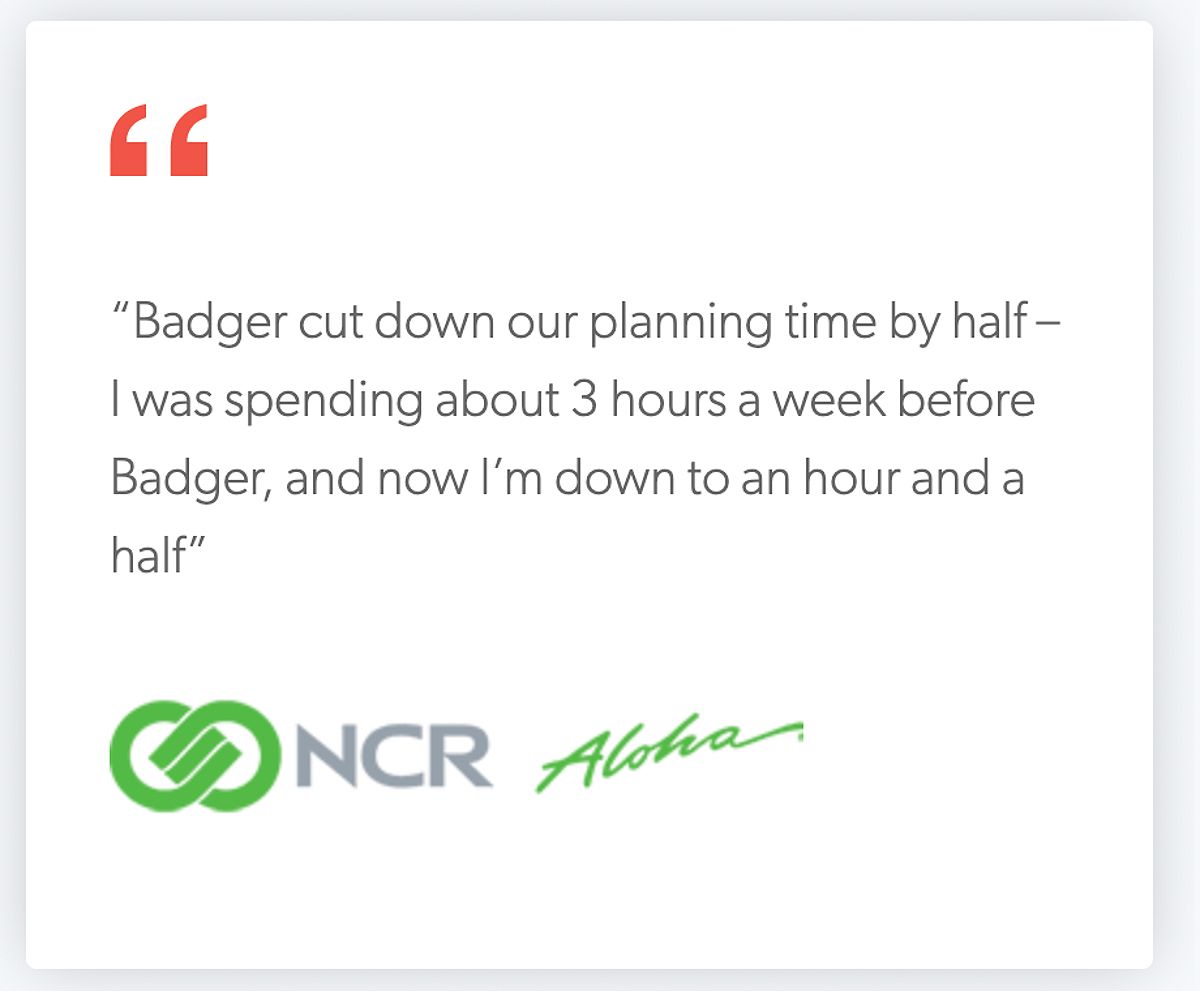
These solutions can accommodate far more stops than Google Maps and seamlessly integrate with the mapping data you’re already familiar with, providing a powerful combination of advanced features and user-friendly functionality.
Calculating the ROI of Route Optimization
Investing in a robust route optimization solution is not just about convenience; it can also significantly impact your bottom line. Understanding the return on investment (ROI) can help justify the expense of such tools.
Quantifying the Cost Savings
Improved route efficiency can lead to tangible cost savings, including:
- Reduced Fuel Expenses: By optimizing routes, businesses can minimize the distance traveled, leading to lower fuel consumption. For instance, a delivery service using optimized routes might reduce its mileage by 15%, translating to significant savings. A 2022 study by the American Transportation Research Institute found that idling accounts for a substantial portion of fuel waste. Route optimization software can minimize idling time at delivery stops, further reducing fuel costs.
- Lower Labor Costs: Less driving time directly translates to fewer hours worked, effectively reducing labor expenses.
- Increased Productivity: Sales teams using route optimization software have reported a 20% reduction in driving time and a 22% increase in sales.
Other Benefits Beyond Fuel Savings
The benefits of efficient route planning extend beyond fuel savings. Optimized routes can also lead to:
- Reduced Vehicle Wear and Tear: Less driving means reduced wear on your vehicles, resulting in lower maintenance costs and prolonged vehicle lifespan.
- Fewer Accidents: By optimizing routes and minimizing driving time, businesses can reduce the risk of accidents, leading to lower insurance premiums.
- Improved Customer Satisfaction: Timely deliveries and services enhance the customer experience, fostering repeat business and positive reviews.
Demonstrating the Value
When calculating the ROI of route optimization software, consider factors like:
- The number of vehicles in your fleet.
- The average cost per mile.
- The time spent on route planning and driving.
By quantifying potential savings, you can build a compelling business case for investing in these advanced tools. For instance, if you have a fleet of five vehicles, each averaging 1,000 miles per month, and your fuel cost is $3 per gallon, optimizing routes could save you hundreds of dollars each month.
Best Practices for Efficient Route Planning
Whether you’re using Google Maps or more sophisticated software, following these best practices can help you maximize the benefits of efficient route planning.
Stay Organized and Adaptable
Before entering your stops, take the time to organize your schedule and logistics. Group similar destinations, prioritize critical stops, and plan your route in advance. Regularly review and adjust your routes based on changing conditions. For example, if a new customer is added to your route or a delivery needs to be rescheduled, don’t hesitate to revisit your route plan. Flexibility is key to maintaining efficiency.
Embrace Technology
While the Google Maps route planner is a solid starting point, don’t shy away from exploring more advanced route optimization software. The time and cost savings they provide may be the catalyst for taking your small business to new heights.
Measure and Optimize
Track key metrics such as fuel consumption, driving time, and customer satisfaction to gauge the effectiveness of your route planning strategies. Utilize this data to continuously refine and optimize your processes.
- Fuel Consumption Tracking: Keep a record of fuel expenses and monitor how changes in your routing affect these costs.
- Driving Time Analysis: Regularly evaluate the time taken for each route and look for patterns that can streamline future planning.
- Customer Feedback: Gather feedback from customers regarding delivery times and service reliability to identify areas for improvement.
Utilize Google Maps Features Effectively
To minimize travel time and costs, make full use of all available features within Google Maps. For example, you can set preferences to avoid tolls or highways if they aren’t essential to your operations. This can lead to additional savings and improved customer satisfaction.
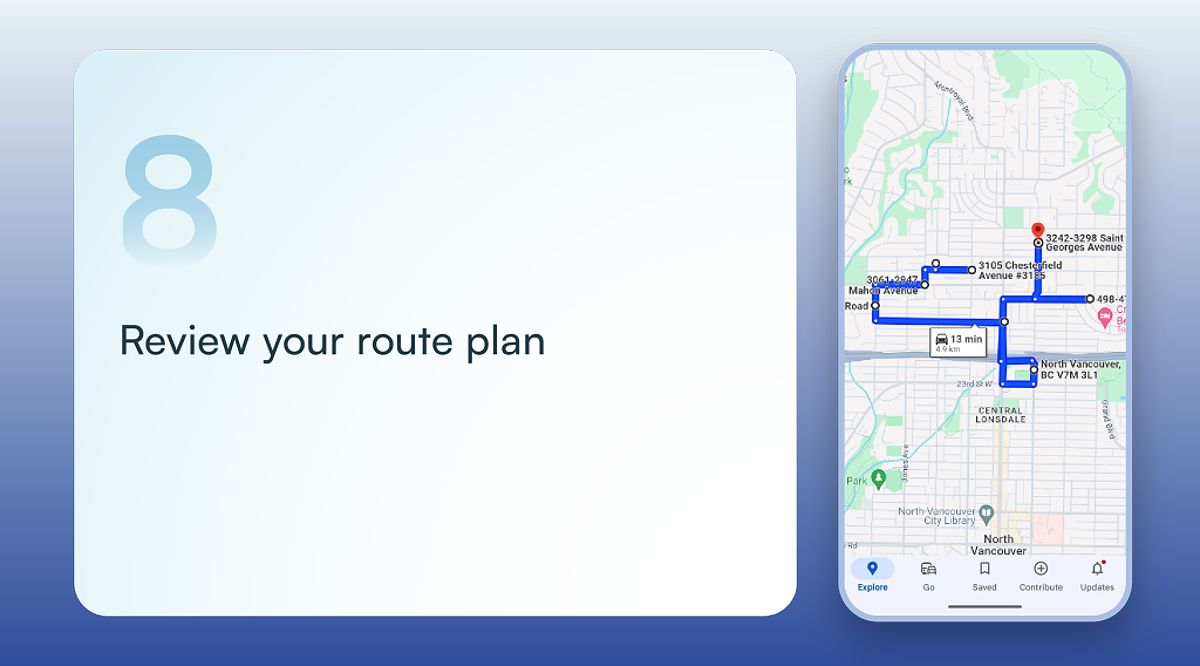
Additionally, consider utilizing the Google Maps API for businesses that require more customization and integration with their systems. This can offer even more control over routing and data management.
Emerging Trends in Route Optimization
As the landscape of route optimization continues to evolve, small businesses should be aware of the latest trends that can enhance their operations.
Increased Use of AI and Machine Learning
Route optimization software is increasingly leveraging AI and machine learning to predict traffic patterns, optimize delivery windows, and improve route efficiency. These technologies enable businesses to stay ahead of potential disruptions and enhance their overall service delivery.
Integration with Electric Vehicle (EV) Routing
With the rising adoption of electric vehicles, route optimization software is adapting to accommodate factors like charging station locations and battery range. This ensures that businesses utilizing EVs can plan routes that maximize efficiency and minimize downtime.
Focus on Sustainability
Many new route optimization solutions prioritize environmentally friendly routing, considering factors such as fuel efficiency and emissions. As consumers become more environmentally conscious, businesses that adopt sustainable practices may also enhance their brand reputation and customer loyalty.
When Google Maps Falls Short: Exploring Alternatives for Small Businesses
While the Google Maps route planner is an invaluable tool for basic navigation, it has limitations that can hinder small businesses with complex routing needs. Recognizing these limitations is essential for ensuring your business runs efficiently.
Detailed Explanation of Google Maps’ Limitations
- 10-Stop Limit: The most significant constraint is the maximum of 10 stops. For businesses requiring more complex routing, this limitation can lead to cumbersome manual planning processes.
- Lack of Advanced Optimization Features: Google Maps does not offer features like time window scheduling or real-time delivery tracking, which are crucial for businesses needing a more dynamic approach to routing.
- Manual Adjustments Required: The absence of automated optimization means that users must manually rearrange stops, which can be time-consuming and prone to error.
Counterarguments to Google Maps’ Limitations
However, some argue that for very small businesses with only a few daily stops, the simplicity and free access of Google Maps outweigh the need for more complex software. For such businesses, the learning curve and cost associated with specialized software might not be justified given their operational scale.
Identifying When a More Advanced Solution is Necessary
As your business grows, it’s essential to recognize when the Google Maps route planner may no longer suffice for your routing needs. Signs that it may be time to explore advanced solutions include:
- Spending excessive time rearranging stops.
- Difficulty accommodating last-minute changes.
- Inability to generate the most efficient routes consistently.
Overview of Features Offered by Professional Route Optimization Software
Investing in advanced route optimization software can provide your business with capabilities that extend beyond what Google Maps offers. Key features to look for include:
- Unlimited Stops: Handle as many stops as necessary without manual intervention.
- Advanced Route Optimization: Algorithms that calculate the best route based on multiple factors.
- Real-Time Tracking: Monitor the status of deliveries and adjust routes as necessary.
- Integration Capabilities: Seamlessly connect with other software systems to enhance data flow and efficiency.
Brief Comparison of Popular Options
Some of the top route optimization software options for small businesses include:
| Software | Key Features | Pricing |
|---|---|---|
| Badger Maps | Unlimited stops, route optimization, CRM integration, mobile app | Starts at $58/month |
| RouteXL | Handles up to 350 stops, route optimization | Free for up to 20 stops, paid plans start at $41.43/month |
| OptimoRoute | Handles hundreds of stops, multi-day planning, driver management | Starts at $35.10 per driver/month |
These solutions can manage far more stops than Google Maps and integrate with the mapping data you’re already familiar with, providing a powerful combination of advanced features and user-friendly functionality.
Calculating the ROI of Route Optimization
While advanced route optimization software comes with an initial investment, the potential returns can be substantial. It’s important to analyze the cost-benefit ratio to make an informed decision.
Counterarguments to ROI of Route Optimization
Conversely, some businesses might find that the initial investment in advanced software, along with the time needed to learn and implement it, outweighs the potential savings, particularly if their operational needs are relatively simple. For smaller operations, the learning curve and expense of sophisticated tools may not provide adequate returns.
Conclusion
Efficient route planning is essential for small businesses aiming to improve productivity, reduce costs, and enhance the customer experience. While the Google Maps route planner is a valuable tool, its limitations may hinder businesses with more complex routing needs. By exploring advanced route optimization software, you can unlock a wealth of benefits, from reduced fuel expenses and increased productivity to improved customer satisfaction and a healthier bottom line.
FAQ
1- What is the maximum number of stops I can add in Google Maps?
Google Maps allows you to add up to 10 stops in a single route. For businesses requiring more stops, alternative route optimization software may be necessary.
2- Can Google Maps optimize my route automatically?
No, Google Maps does not offer automatic route optimization. Users must manually rearrange stops to find the most efficient route.
3- What features should I look for in route optimization software?
Key features include unlimited stops, advanced algorithms for route optimization, time window scheduling, real-time tracking, and integration with CRM systems.
4- How can I calculate the ROI of route optimization software?
To calculate ROI, consider factors like the number of vehicles, average cost per mile, and potential savings in fuel and labor costs from optimized routes.
By considering these FAQs, you can better understand how to leverage route planning tools effectively for your business needs.
